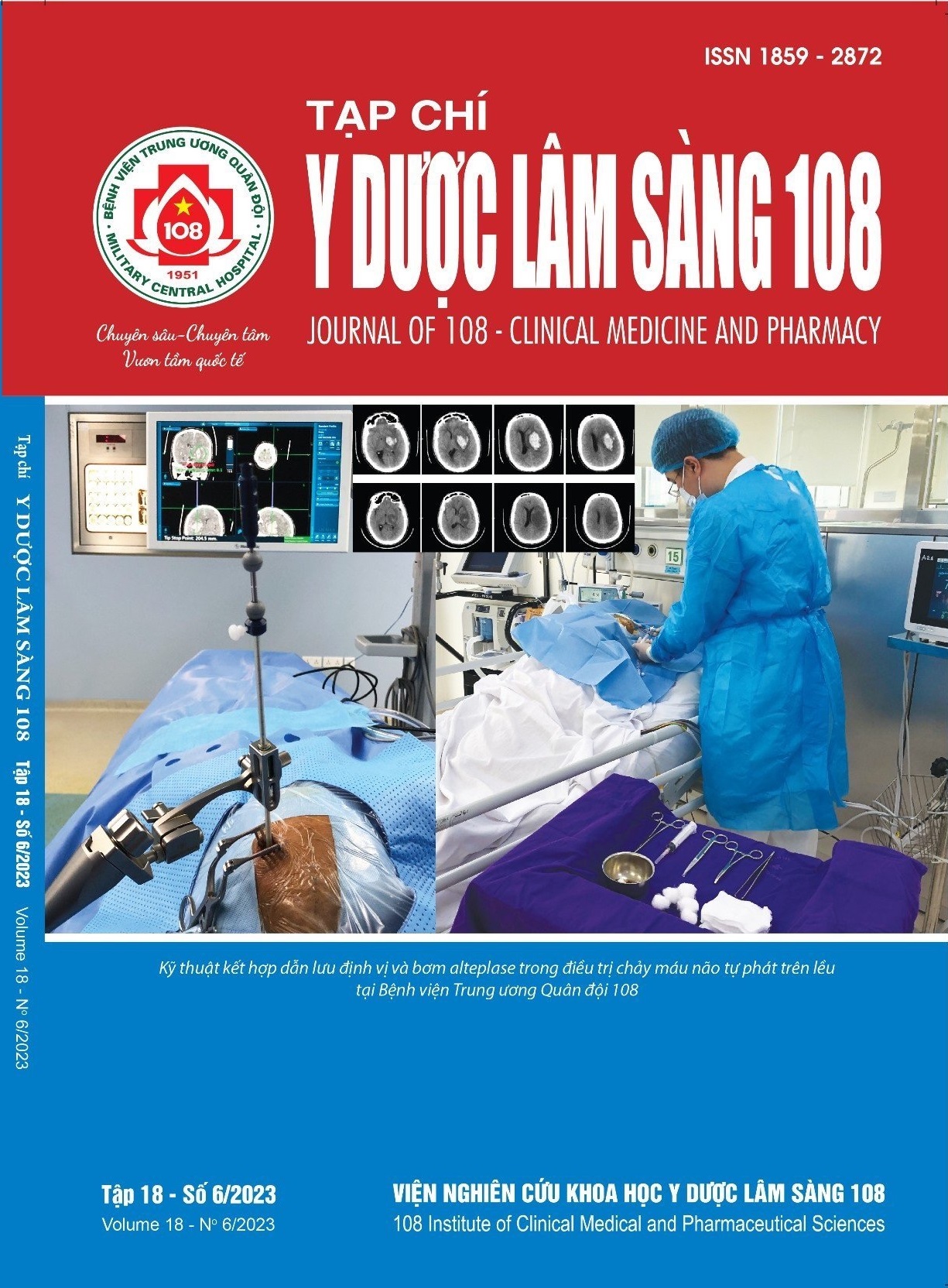Ablated effect of primary premature ventricular contractions originating from right ventricle by radio frequency energy based on cardiac chamber 3-dimentions electroanatomy mapping
Main Article Content
Keywords
Abstract
Objective: The purpose of the study is to evaluate the effectiveness of right ventricular extrasystoles ablation by radiofrequency (RF) wave energy based on 3-dimensional cardiac chamber endocardial mapping. Subject and method: 152 patients were performed electrophysiological study and ablation at Hanoi Heart Hospital from 01/2019 to 6/2023. Of these, 85 patients with PVCs originating from the RVOT using traditional 2D mapping for ablation. The remaining 67 patients used 3D mapping method for ablation, of which 60 patients had PVCs originating from the RVOT, 7 patients with PVCs originating from non-RVOT. Result: The early success rate of the 3D method: 93.3% in the RVOT group, 85.7% in the non-RVOT group; The early success rate of the 2D method was 95.3%. The late success rate of the 3D method: 91.7% in RVOT group, 71.4% in the non-RVOT group; The late success rate of the 2D method was 88.2%; The fluoroscopy time was significantly reduced in the 3D method (4.2 ± 3.7 seconds compared to 11 ± 8.4 seconds). Conclusion: 3D mapping method has a higher success rate than 2D method in the group of PVCs originating from RVOT, the success rate is lower than in the group of non-RVOT.
Article Details
References
2. Trương Quang Khanh (2013) Nghiên cứu kết quả điều trị nhịp nhanh thất nguyên phát bằng năng lượng sóng tần số radio qua catheter. Luận án tiến sĩ, Học viện Quân y.
3. Bikkina M, Larson MG, and Levy D (1992) Prognostic implications of asymptomatic ventricular arrhythmias: The Framingham Heart Study. Ann Intern Med 117(12): 990-996.
4. Latchamsetty R, Yokokawa M, Morady F et al (2015) Multicenter outcomes for catheter ablation of idiopathic premature ventricular complexes. JACC Clin Electrophysiol 1(3): 116-123.
5. Marcus GM (2020) Evaluation and management of premature ventricular complexes. Circulation 141(17): 1404-1418.
6. Movsowitz C, Schwartzman D, Callans DJ et al (1996) Idiopathic right ventricular outflow tract tachycardia: Narrowing the anatomic location for successful ablation. Am Heart J 131(5): 930-936.
7. Tada H, Tadokoro K, Ito S et al (2007) Idiopathic ventricular arrhythmias originating from the tricuspid annulus: Prevalence, electrocardiographic characteristics, and results of radiofrequency catheter ablation. Heart Rhythm 4(1): 7-16.
8. Van Herendael H, Garcia F, Lin D et al (2011) Idiopathic right ventricular arrhythmias not arising from the outflow tract: Prevalence, electrocardiographic characteristics, and outcome of catheter ablation. Heart Rhythm 8(4): 511-518.
9. Zhong L, Lee YH, Huang XM et al (2014) Relative efficacy of catheter ablation vs antiarrhythmic drugs in treating premature ventricular contractions: A single-center retrospective study. Heart Rhythm 11(2): 187-93.
10. Sana M, Al-Khatib M, William G, Stevenson M and Michael J, Ackerman M (2017) 2017 AHA/ACC/HRS guideline for management of patients with ventricular arrhythmias and the prevention of sudden cardiac death. Circulation 138: 272-391.
 ISSN: 1859 - 2872
ISSN: 1859 - 2872
